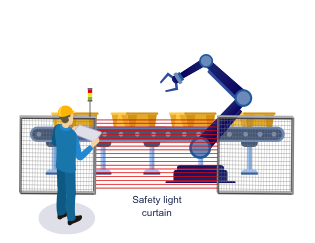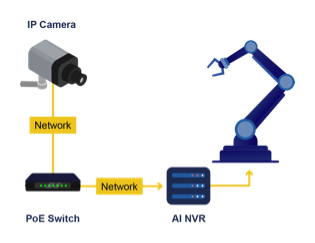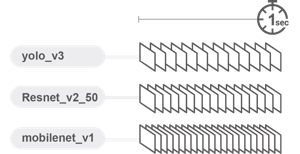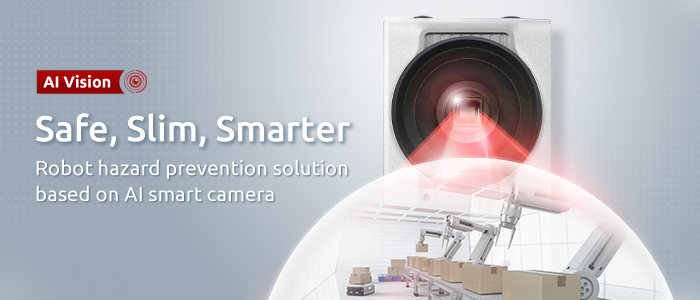This Robot Hazard Prevention Case Study has kindly been supplied by our friends at ADLINK. Should you require any further information on the product, contact us.
In the era of Industry 4.0, the challenges of rising labor costs and increasing demand for flexible customisation are pushing manufacturers to adopt robotics at a faster rate. According to the International Federation of Robotics (IFR), nearly 2,000,000 new industrial robots will be installed in factories around the world between 2020 and 2022. This means that production operators will be working with robots more frequently and closely.
Challenges of Traditional Robot Hazard Prevention Solutions
Safety light curtains are a traditional robot hazard prevention solution. However, they occupy significant floor space and lack flexibility in how they can be implemented.
As deep learning technology matures, machine vision-based solution providers have begun offering IP surveillance combined with AI NVR as a solution for preventing robot hazards on the production line. IP surveillance brings installation flexibility, but brings the challenges of complex cabling and high quality network bandwidth requirements. Industrial smart cameras along with mature AI algorithms are now feasible and have been deployed by first-tier EMS manufacturers in Taiwan to address these problems.
Robot Hazard Prevention Solutions
Safety Light Curtain | AI Smart Camera |
 |  |
| Requires physical pillars mounted on the floor. | NEON AI smart cameras can be installed flexibly from the ceiling. |
| Physical fences occupy significant floor space, reducing production area | Without a physical fence, only hazard zone indication markings on the floor are required, freeing more floor space for production. |
| Physical fences obstruct collaboration between robot arms and AMRs (Autonomous Mobile Robots). | Without physical boundaries, AMRs are able to freely deliver materials autonomously across the factory and warehouse. |
IP Surveillance and AI Server | AI Smart Camera |
 |  |
| Requires complex, long distance cabling to connect IP cameras, PoE switches, AI NVRs and robot arms.
| Only requires a cable to connect NEON AI smart camera and robot arms. |
| Image transmission from IP camera to AI computer relies on network bandwidth. Transmission latency may exceed 1 second, resulting in accidents in the hazard zone. | Image analysis is completed immediately on NEON AI smart camera. Upon any intrusion into the robot hazard zone, the NEON AI smart camera will trigger a command to stop robot arms.
|
| Requires high quality network and more maintenance effort. | Enables simple deployment, requires moderate network quality and allows for easy maintenance |
Advantages of NEON AI Smart Camera
| All in one design for easy deployment
NEON integrates Intel® Movidius™ or NVIDIA® Jetson™ AI vision processing cores, a wide range of image sensors, optimized OS, and rich I/O for vision applications in a palm-sized chassis to minimize cabling complexity and installation space requirements.
|  |
| Worry free reliability for industrial applications
In addition to strict validation tests for EMC, ESD, shock, vibration and thermal dissipation, NEON also supports IP67 for harsh industrial environments.
|  |
| Optimised software for faster deployment
NEON is pre-installed with optimized operating system, software, and Edge Vision Analytics (EVA) SDK. EVA SDK supports NVIDIA® TensorRT™ and Intel® OpenVINO™ AI inference engines, as well as field-ready application plugins for streamlining AI vision project development time.
|  |
| Performance Consultancy Service for Optimisation
ADLINK has verified the performance of all possible combinations of neural networks and AI accelerators. The performance benchmarks are available upon requests to optimise customers’ applications.
|  |
